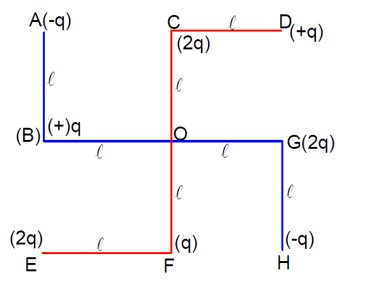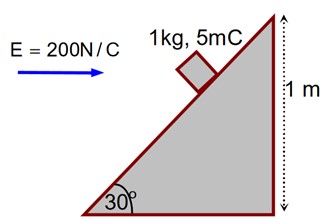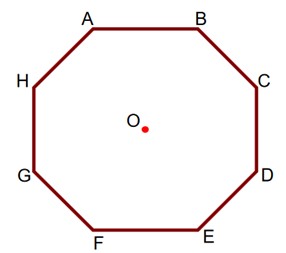Electric Charges and Fields
Get insights from 101 questions on Electric Charges and Fields, answered by students, alumni, and experts. You may also ask and answer any question you like about Electric Charges and Fields
Follow Ask QuestionQuestions
Discussions
Active Users
Followers
New answer posted
3 months agoContributor-Level 10
E? (due to A and G) = 2 * (kq/l²)cos (45) = √2 kq/l² (downwards)
E? (due to B and F) = 2 * (kq/l²)cos (45) = √2 kq/l² (towards left)
E? (due to C and H) = 0
E? (due to D and E) = 0
Resultant E = √ (E? ²+E? ²) = √ (2 (kq/l²)²+2 (kq/l²)²) = 2kq/l²
(Solution in the image seems to be different.)
New answer posted
3 months agoContributor-Level 10
T sin θ = (1/4πε? ) * q²/ (2lsinθ)²
T cos θ = mg
∴ tan θ = q² / (4πε? mg * 4l²sin²θ)
[tan θ ≈ θ, for small angle]
So, θ³ = q² / (16πε? mgl²)
θ = ( q² / (16πε? mgl²) )¹/³
Also separation = 2l sin θ ≈ 2lθ
= 2l ( q² / (16πε? mgl²) )¹/³
= ( 8q²l³ / (16πε? mgl²) )¹/³
= ( q²l / (2πε? mg) )¹/³
New answer posted
3 months agoBeginner-Level 5
When two or more individual charges are present in a system, the total charge will be an algebraic sum of all individual charges and not the vector sum. Therefore, an electric charge is considered as a scalar quantity.
New answer posted
4 months agoContributor-Level 10
Decay of current in Inductor is given by,
At t = 100
i = 0
i.e. i = i0 -(1)
e.m.f induced
=
New answer posted
4 months agoContributor-Level 10
If size of object is very small as compare to wave length of EM wave in free space then, scattering will happen.
Taking an Exam? Selecting a College?
Get authentic answers from experts, students and alumni that you won't find anywhere else
Sign Up on ShikshaOn Shiksha, get access to
- 65k Colleges
- 1.2k Exams
- 679k Reviews
- 1800k Answers



